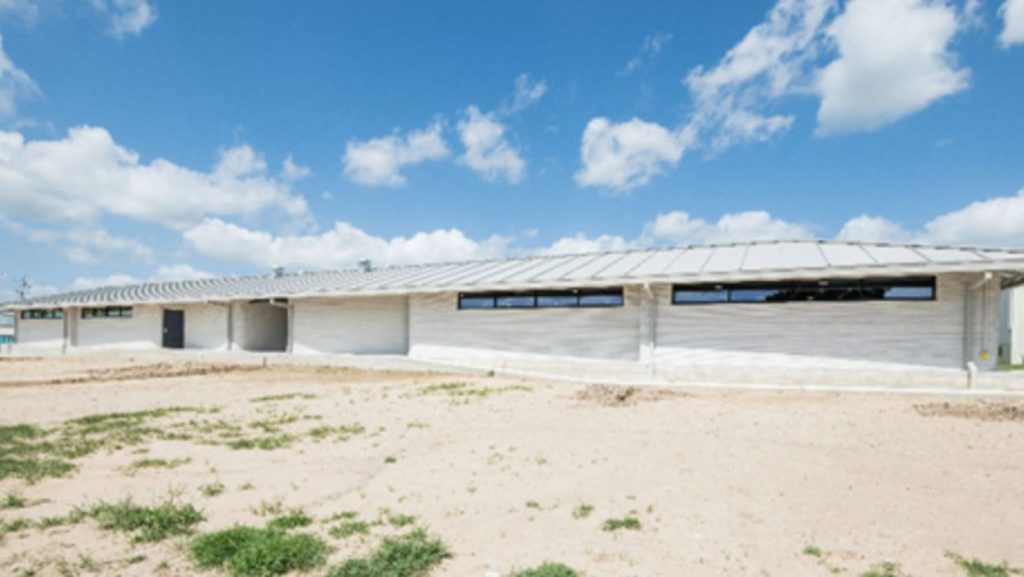
How large is the biggest 3D printed structure in North America?
It turns out to be a 3,800sf (353sm) military barracks located at the Camp Swift Training Center in the town of Bastrop, Texas. For the geographically-challenged (like me), Bastrop is just east of Austin on the road to Houston.
The 3D printed barracks are intended to house transient military personnel that come to Camp Swift for training.
The project used ICON’s large-scale construction 3D printer, which can extrude concrete precisely to form solid walls. Other portions of the project were built using conventional building methods.
The barracks were designed by Logan Architecture, which partnered with ICON to produce the build.
Funding for the project was provided by innovation-related sources within the military, who seem to view the project as a kind of experiment to see whether the technology is practical.
At this point they believe so. Texas Military Department Director of Facilities, Col. Zebadiah Miller explained:
“The printed barracks will not only provide our Soldiers a safe and comfortable place to stay while they train, but because they are printed in concrete, we anticipate them to last for decades.”
That’s likely true, as concrete is a very long-lasting material. This is one aspect of 3D printed buildings that is often unrecognized. While a standard wooden building has a certain lifespan, a concrete building will last far longer. There’s also the ability of concrete structures to far better withstand the increasingly powerful storms that batter our cities. Texas is an area subject to hurricanes, and while the Bastrop site is quite far inland, it can still be subject to high storm winds.
What is at the root of this project? Why is it being done? Texas Military Department explains:
“This innovative technology intends to deliver military barracks at an increased speed compared to traditional construction and will replace temporary barracks that are beyond their intended lifespan with more efficient permanent structures. The 3D printing process is being evaluated for suitability as an expeditionary solution to enable printing of facilities in forward deployed locations, potentially reducing time, cost and construction risks.
This is an interesting statement. It suggests that a future military option could be to take construction 3D printers into the field, where they could quickly build relatively complex — and highly protective — structures for soldiers to work from.
If you think about it, there might be many more military applications for construction 3D printing. For example, what would be the value of 3D printing a reinforced concrete defensive position in a single day? If construction 3D printing can be made suitably mobile, it may even become a strategic capability that could alter battlefield scenarios.
Meanwhile, the Bastrop project has been 3D printed and occupants are to arrive later this year.
